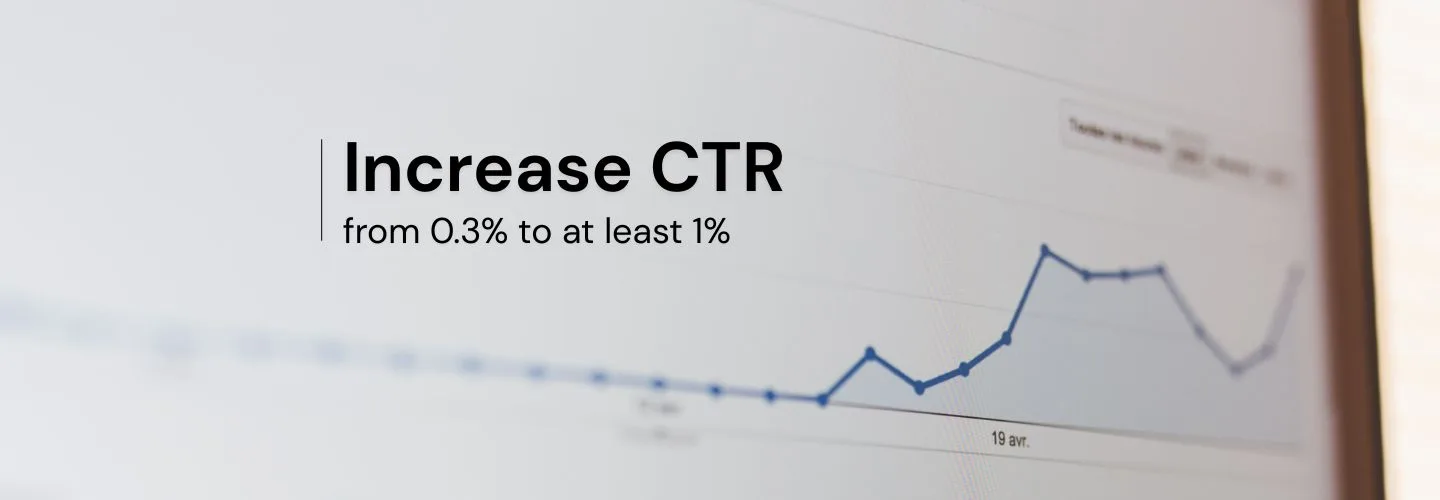How Canva Used Programmatic SEO to Hit 250M+ Visits (And How SaaS Companies Can Get in on the Action)

You know that feeling when you spend hours writing a blog post, only to get… 8 views?
Meanwhile, Canva casually generates over 250 million organic visits a month using a strategy that doesn’t involve posting daily on LinkedIn, begging for backlinks, or spending a fortune on ads.
What’s their secret?
Programmatic SEO.
If that phrase makes you picture spreadsheets, automation tools, and a lot of data wrangling… You are not wrong.
But here’s the good news:
You don’t need a huge team or a five-figure budget to make it work.
We have been helping SaaS companies grow online since the early 2000s (yes, we survived the Panda, Penguin, and AI floods). So today, we are sharing the playbook behind Canva’s success, and how your SaaS brand can implement it without cutting corners or burning out your team.
TL;DR
Programmatic SEO uses automation + templates + structured data to create tons of keyword-targeted landing pages.
- Canva’s secret sauce: Templates, tool pages, and audience-specific content at massive scale.
- Why it works for SaaS: High efficiency, long-tail search capture, strong conversion intent.
- We break it down step by step, no fluff, just what works.
- And yes, we have been doing this long enough to know what doesn’t work, too.
What Is Programmatic SEO?
Let’s simplify it.
If traditional SEO is hand-crafting pages one at a time, programmatic SEO (pSEO) is building a smart system that creates hundreds of useful pages using data + automation + a good template.
Still sounds abstract?
Think about a SaaS platform for tutors. With programmatic SEO, you could:
- Create one landing page template: “Find a [Subject] Tutor Online”
- Plug in data for: Math, English, Chemistry, Piano, etc.
- Auto-generate 100+ pages like:
- “Find a Math Tutor Online”
- “Find a Chemistry Tutor Online”
- “Find a French Tutor Online”
You have just scaled content across dozens of long-tail queries. No blog posts, no rewriting the same intro 50 times. Just structure, automation, and smart execution.
How Programmatic SEO Works
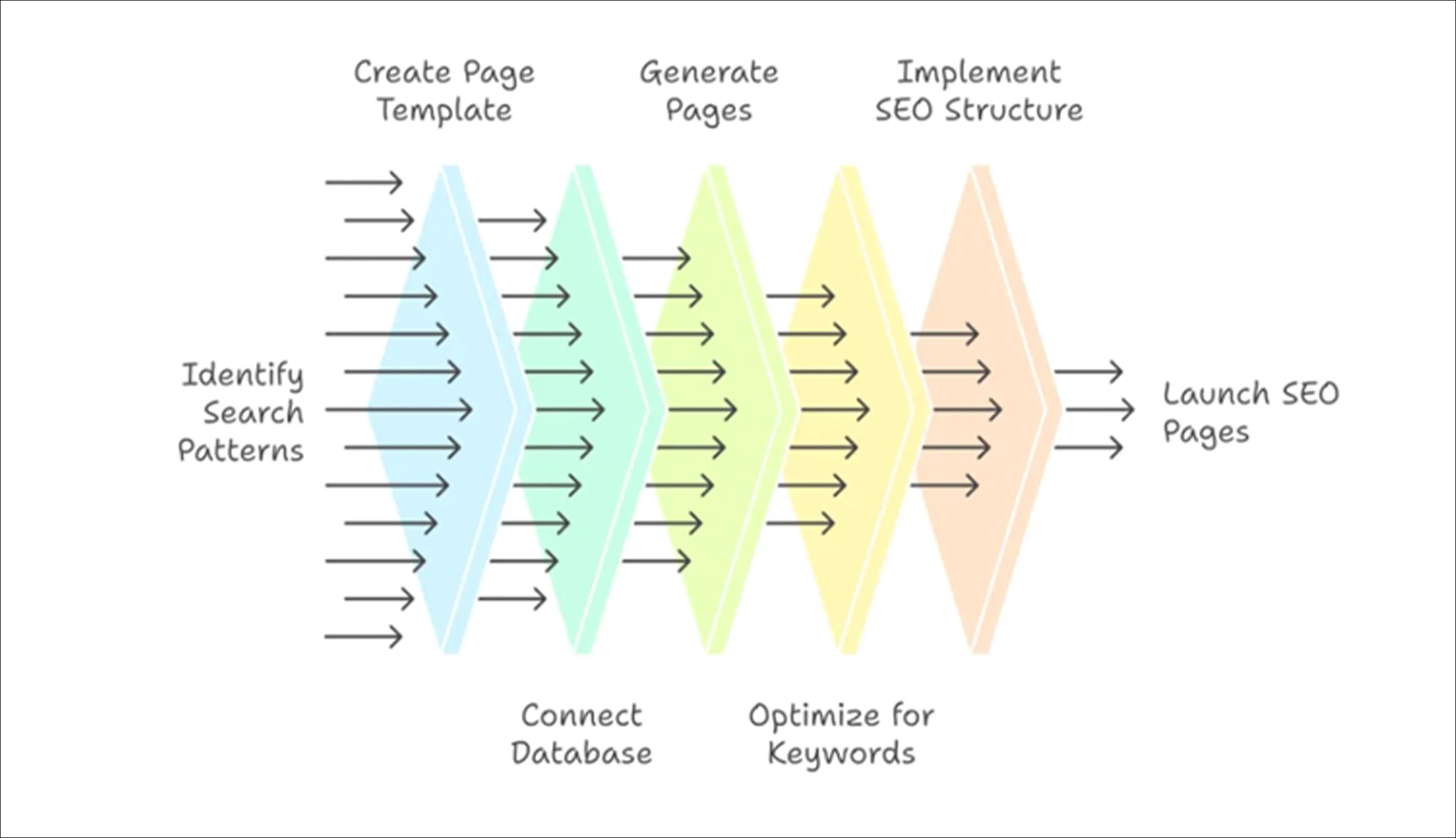
Programmatic SEO is all about finding patterns in what people search for and then making a webpage for every single variation of that pattern.
It’s like connecting a database to a webpage template and using automation to create tons of pages quickly. Each page looks the same but has different information to match a specific search.
Why Programmatic SEO Works So Well for SaaS (And Always Has)
We have worked with SaaS brands through every major Google update since 2005. And let us tell you, this strategy is practically made for SaaS.
Here’s why:
1. It’s Built for Scale
You don’t need a 20-person content team.
A solid structure + smart automation = thousands of pages.
Perfect for:
- Lean marketing teams
- Bootstrapped startups
- Growth-stage companies looking for efficient compounding traffic
2. It Targets Long-Tail Search Intents
High-volume keywords are expensive and competitive.
But long-tail keywords?
- “Marketing proposal template for nonprofits”
- “CRM integration with Slack”
- “Freelance contract template for writers”
Each on its own? Low traffic.
Together? A traffic goldmine.
3. It Matches Buyer Intent
People searching “Free invoice generator for freelancers” aren’t browsing; they are ready to take action.
Give them the tool, the resource, the next step.
You just earned trust and a potential user.
4. It’s Easier Than It Used to Be
Back in our day, you needed developers, servers, and a bit of luck.
Now?
You can set up a full pSEO system using:
- Airtable or Google Sheets (to store data)
- Webflow or WordPress (as a CMS)
- Zapier, Make, or custom scripts to automate the rest
- AI tools to generate meta descriptions, intros, or FAQs (with human review, of course)
One Crucial Note: Semantic SEO is Everything
We are not talking about auto-generating garbage pages full of awkward keyword repetition.
Programmatic SEO only works when it’s backed by semantic SEO, the kind that understands what people are searching for and provides real, contextual answers.
Here’s how you do it right:
- Write pages that answer user questions naturally
- Use related keywords and synonyms, don’t over-optimize
- Structure content with headings, FAQs, and visual elements
- Keep each page human, helpful, and unique
Google (and your readers) can smell a half-hearted automation job from miles away.
Canva’s Approach to Programmatic SEO- Scaling with Intent
People always talk about Canva as a programmatic SEO success story in SaaS. Canva, the graphic design platform, totally crushed it by using programmatic content to rank high for tons of design-related searches.
This strategy led to over 250 million organic visits each month, backed by around 190,000 indexed pages in Google.

How’d they do it?
They systematically created landing pages that cater to specific user needs in the design space, all at a massive scale.
Let’s break down what Canva did right and what SaaS brands can learn from it.
1. “Maker” Pages for High-Intent Tools
Examples:
- Logo Maker
- Resume Builder
- Invitation Creator
These are functional landing pages built to serve people actively looking to create something.
Each page includes:
- Clear, search-matching headlines like “Free Logo Maker”
- A short intro explaining the tool
- Design previews or interactive elements
- Clear CTAs like “Start Designing Now”
Result:
- Canva’s Logo Maker page draws in more than 500,000 organic visits every month, just one page, doing serious heavy lifting.
- Similar “maker” pages, like resume builders and invitation creators, generate tens of thousands of visits individually, stacking up to massive traffic overall.
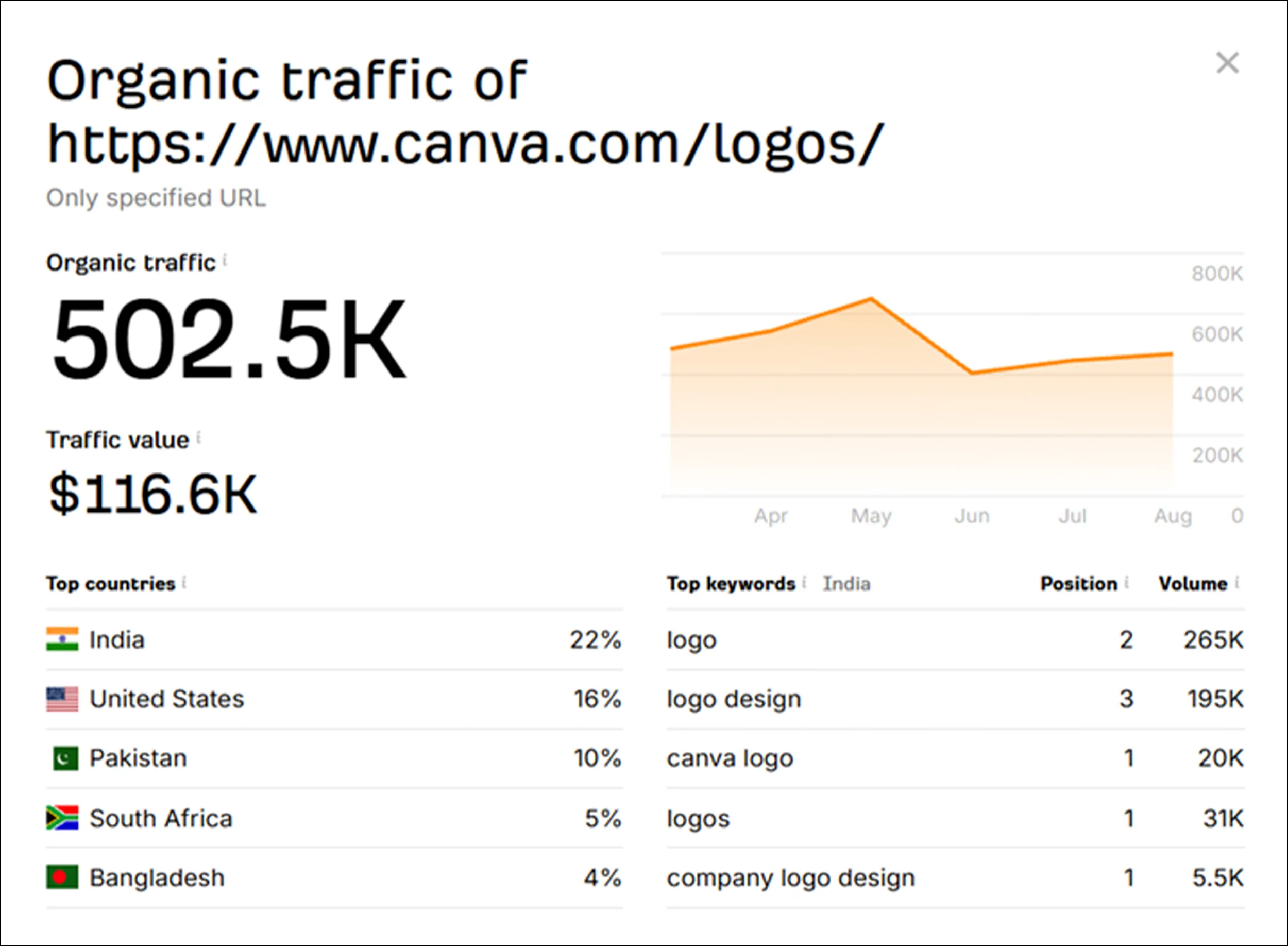
2. SEO-Friendly Template Gallery Pages
Examples:
- Resume Templates
- Instagram Story Templates
- Birthday Invitation Templates
Canva created SEO pages for every major template type.
Each one includes:
- Keyword-rich title and intro
- A filterable gallery of templates
- Supporting content like how-to text or design tips
- Internal links to related templates
These aren’t lazy image galleries; they are optimized landing pages designed for both discovery and conversion.
Performance: The “Resume Templates” page gets over 1,440,000 organic visits/month.
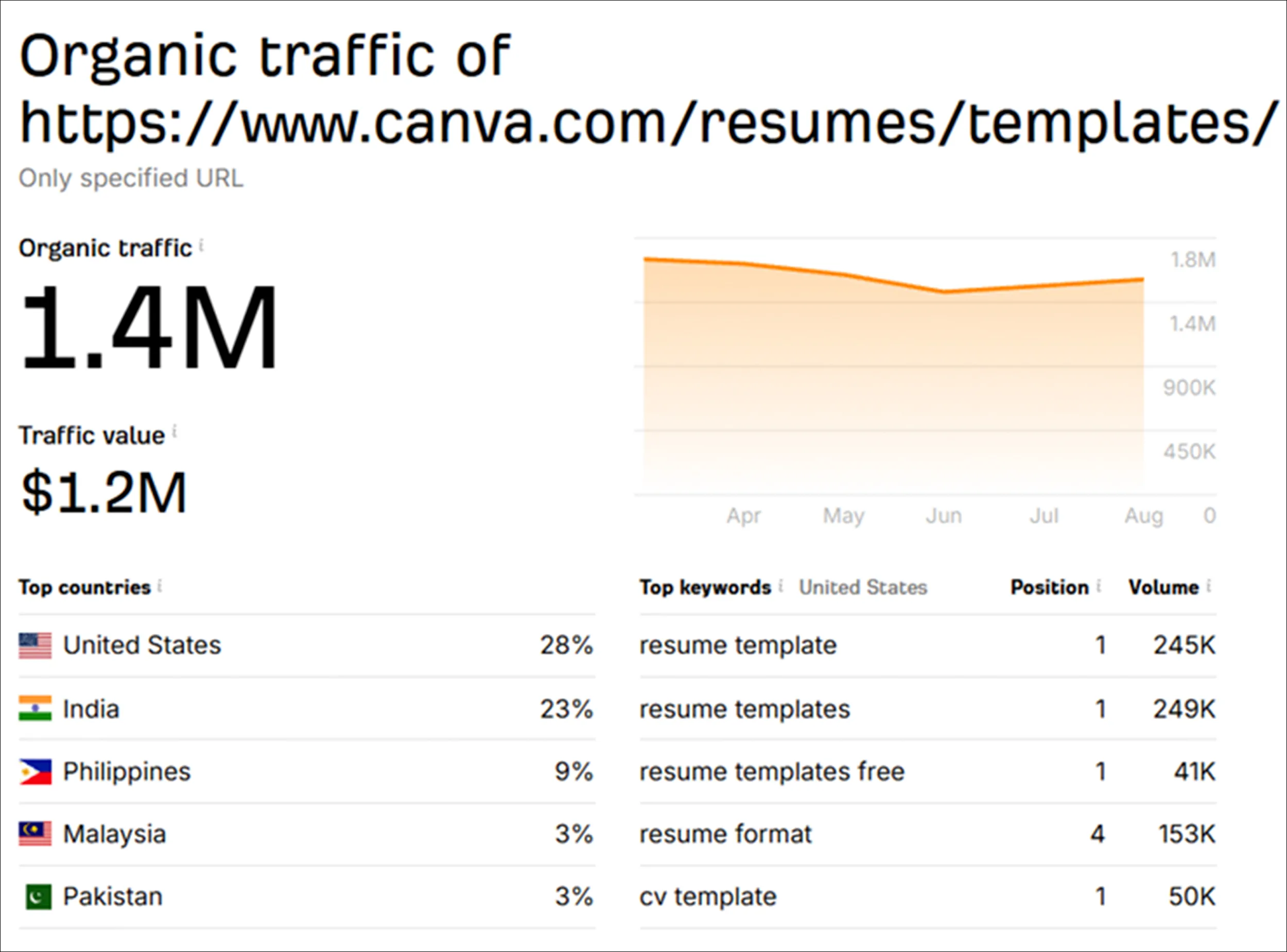
3. Industry or Use-Case Specific Pages
Examples:
- Canva for Real Estate
- Canva for Teachers
- Canva for Nonprofits
These pages don’t target high-volume terms, but they are hyper-relevant.
And relevance means conversion.
Every niche-focused page is written with the user in mind, addressing specific pain points, use cases, and next steps that resonate with that audience.
- What Canva can help them do
- Relevant features
- CTAs, FAQs, and examples
Even with just a few hundred monthly visits, they likely convert very well.
Implementing Programmatic SEO for SaaS (Step-by-step)
Step 1: Identify Scalable Keyword Patterns
Look for queries that follow patterns you can replicate:
- Integrations: [Tool] + [Tool] integration
- Templates: [Use case] + template
- Comparisons: [Product A] vs [Product B]
- Industries: CRM for [industry], Time tracking for [role]
Tools to help:
- Ahrefs or Semrush to uncover search volume, keyword patterns, and intent gaps worth targeting.
- Google Trends (to validate ongoing interest)
- Answer the Public (for phrasing + related questions)
Step 2: Build a Strong, Flexible Page Template
Your page should include:
- Title + H1 that naturally includes the main keyword
- Short intro paragraph
- Key content sections (examples, FAQs, how-to guides)
- Visuals or product screenshots
- Strong CTA (sign up, try now, learn more)
- Internal links to hub or related pages
Pro tip: Make the template modular so it’s easy to enrich later.
Step 3: Gather and Structure Your Data
Your “toppings” need to be good.
Use:
- Airtable, Sheets, or a CMS database to store core info
- Leverage AI to draft page elements like intros and FAQs, but always include human oversight to ensure tone, accuracy, and clarity.
- Verified sources to ensure accuracy
- Manual QA before you hit publish
Step 4: Automate Your Publishing Workflow
We have helped teams use:
- Zapier / Make for automation
- Airtable + Webflow for no-code CMS
- WordPress with custom plugins
- Python scripts for heavy-duty scaling
Don’t publish 1,000 pages in a day. Start with 50–100, then scale based on performance.
Step 5: Track, Improve, Iterate
- Use Google Search Console for indexing + keyword data
- GA4 helps you monitor how users engage with your content, from visits to conversions, so you can optimize what matters
- Add tools like Hotjar to see what users do
- Keep optimizing based on data
Programmatic SEO is not a one-time tactic; it’s an evolving framework that grows with your business.
What Usually Goes Wrong (So You Can Avoid It)
The tech team working on pSEO usually focuses on the technical side of things, like sitemaps, internal linking, landing page templates, and all that jazz. But, they often forget about the actual user experience – or even worse, they will knowingly launch crappy pages just to get more organic search traffic.
Full read- The Hidden Dangers of Programmatic SEO
Here are a few real-world issues we have seen:
Thin or Duplicate Pages
If every page looks the same except for one word, you are headed for SEO purgatory.
Add real value, helpful content, and some unique elements per page.
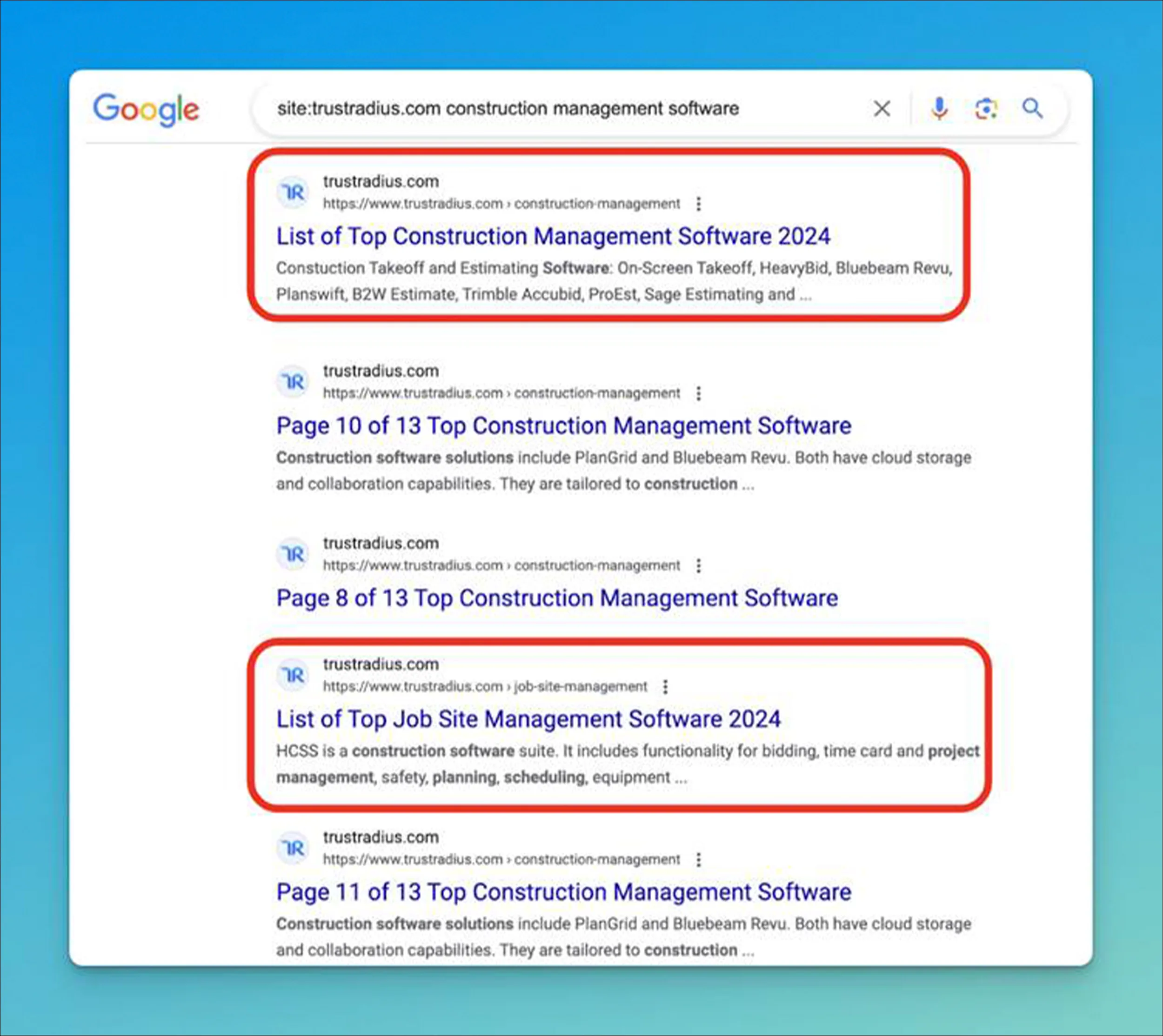
Slow or No Indexing
Don’t assume Google will index everything.
Help it out with sitemaps, clean URL structures, and internal linking.
No User Value
Pages should do something, inform, inspire, or solve a problem.
Design matters. UX matters.
Conversion paths matter.
Bad or Incomplete Data
Garbage in, garbage out.
Validate your sources before going live at scale.
Case Study: The Dark Side of Programmatic SEO
While programmatic SEO can be a game-changer, it’s not without risks. Take, for example, Tailride’s experience with AI-generated content.
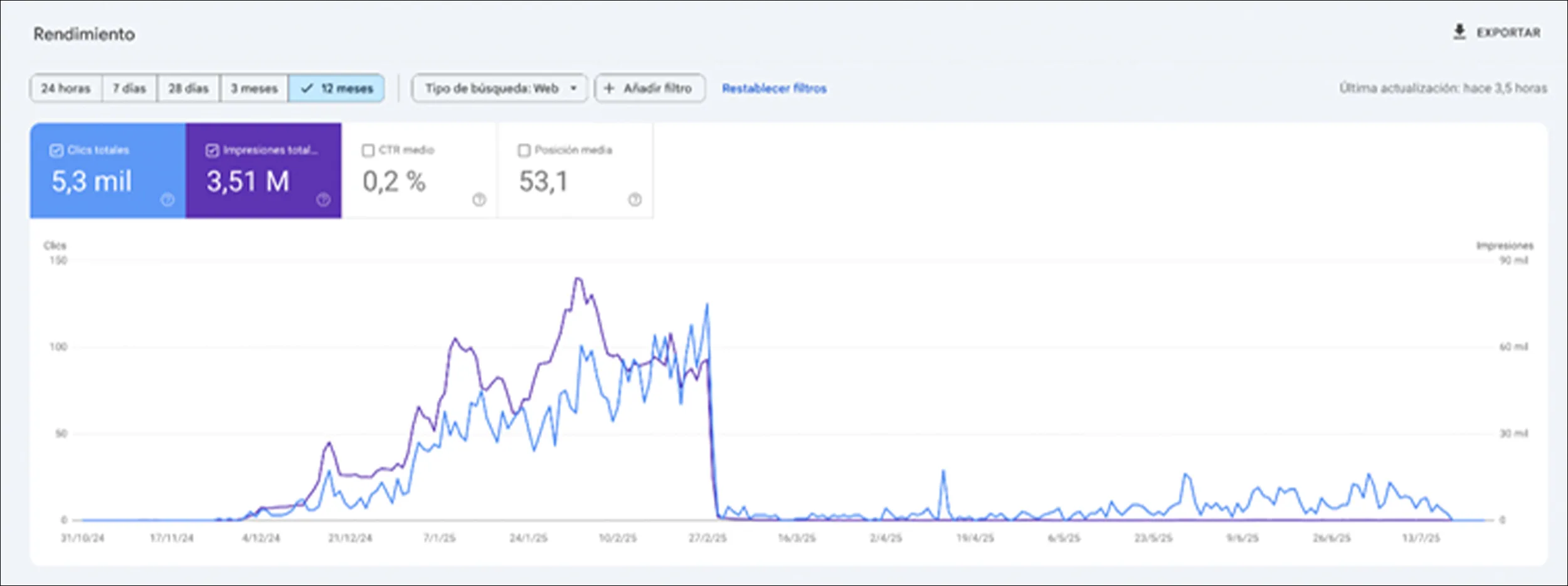
The Pitfall: Over-Automation Without Oversight
Tailride published over 22,000 AI-generated pages rapidly, using scraped data and automated publishing. At first, this boosted rankings for niche queries, but without manual review, many pages were thin on valuable content, targeted irrelevant keywords, and scaled too aggressively.
The Consequence: A Google Penalty
In early 2025, Tailride saw its organic traffic vanish almost overnight as Google’s algorithms de-indexed most of its pages, leaving just the homepage visible. This was likely an algorithmic penalty due to perceived spammy tactics.
The Lesson: Quality Over Quantity
Tailride’s case is a clear warning:
- Prioritize genuine value and relevance on every page.
- Target keywords closely aligned with your product.
- Scale content thoughtfully, quality and trust matter more than volume.
For the full story on Tailride’s experience, check out their detailed blog post.
Between Canva and Tailride: Where Will Your SaaS Story Land?
Programmatic SEO is powerful, but it cuts both ways.
You have seen how Canva scaled smartly, building real value, aligning with user intent, and turning templates into traffic engines.
You have also seen how Tailride scaled too fast, without enough quality control or relevance, and paid the price with a devastating Google penalty.
So the next move isn’t just about “what” you will build…
It’s about how intentionally you will do it.
And that’s where we come in.
Whether you:
- Want to map out your first 50 programmatic pages
- Need help avoiding content quality pitfalls
- Are you rethinking your site architecture for semantic SEO
- Or just want a second opinion before you hit publish…
Let’s figure it out, together.
Got a challenge or idea you want feedback on?
Send it over LinkedIn or connect here.

